Stepping off the ferry on the verdant shore of Governors Island to view the Institute for Public Architecture’s Brooklyn Queens Expressway (BQE) exhibit feels like entering a time-capsule of a bygone New York. Following eight years of biannual traveling residencies, the Institute for Public Architecture (IPA) has made its permanent headquarters in two floors of Governors Island’s Block House. The early 1840s square, brick edifice–also known as Building 9–stands out amid the cluster of wood-framed 19th century dwellings.
Previously a military prison turned dormitory for ferry operators, the Greek Revival historic landmark, designed by architect Martin E. Thompson, also served as a hospital, general’s headquarters, and officers’ quarters. As part of the Trust for Governors Island’s ongoing mission of programs and creation of public spaces, the IPA, a non-profit organization, transformed the Block House (thanks to a grant from New York State Council on the Arts) into a shared arts space with Shandaken Projects, a non-profit that offers public arts programs, residencies, and fellowships.
The IPA’s programs involve architectural solutions to urban problems. “Our whole pitch to architects is: ‘Don’t work for rich people, work for people who can actually be affected and have their lives changed,’” says architect and founding principal of the IPA Jonathan Kirschenfeld, “We’re like a Peace Corps of architects. We’re here to help, tell us what you need.”
The BQE exhibition looks at how Robert Moses’ controversial expressway destroyed and splintered neighborhoods. And instead of mitigating vehicular traffic as intended, the BQE increased it. The IPA asked five collaborative teams a question: “If we tore down the Brooklyn Queens Expressway, what could we build instead?” (The line of inquiry follows the proposal of a mayoral task force to radically overhaul the deteriorating expressway instead of repairing it.)
The teams’ design responses took examples of highway demolition and redesign in cities from San Francisco to Boston as a springboard and adhered to IPA’s call for addressing climate change, environmental justice, and quality of life in New York City. In doing so, the five teams selected by 11 jurors particularly examined environmental risks, economic factors, demographics, health and poverty rates, the need for greenspace, and transportation safety.
The jury consisted of a number of leaders in the architecture and urban design: Jeffrey Shumaker, former director of urban planning at Bjarke Ingels Group (BIG); Dr. Harriet Harriss, dean of Pratt School of Architecture; Mark L. Gardner, principal of Jaklitsch/Gardner Architects; Michael King, principal of Traffic Calmer, a design and planning practice; Ray Gastil, director of Carnegie Mellon’s Remaking Cities Institute; Shin-pei Tsay, Uber Technologies’ director of Policy for Cities and Transportation; Fred Harris, managing director of Mission Title Agency; Purnima Kapur, principal of Urbanism Advisors and currently Harvard University’s Chief of University Planning and Design; Scott Ruff, principal of RuffWorks Studio; Susanne Schindler, co-director of ETH Zurich university's Masters of Advance Studies in History and Theory of Architecture; and Margaret Newman, principal of More Urban, a consulting firm.
The selected architects, engineers, designers, filmmakers, and community advocates took part in an eight-weeks virtual summer residency in 2020 titled “To Be or Not to BQE?” The installation of the resulting projects occupies a floor of the Block House in a well-plotted scheme: the teams’ proposals have separate rooms.
The first proposal “BQE: Freight, Mobility, Community” is aimed at reducing freight movement to decrease demand for the highway. Civil engineer and urban planner April Schneider, transportation engineer Emily Valentino, and civil engineer Patricia Roche want to replace large, inefficient gas vehicles carrying small loads with bike, electric, and low-emission alternatives.
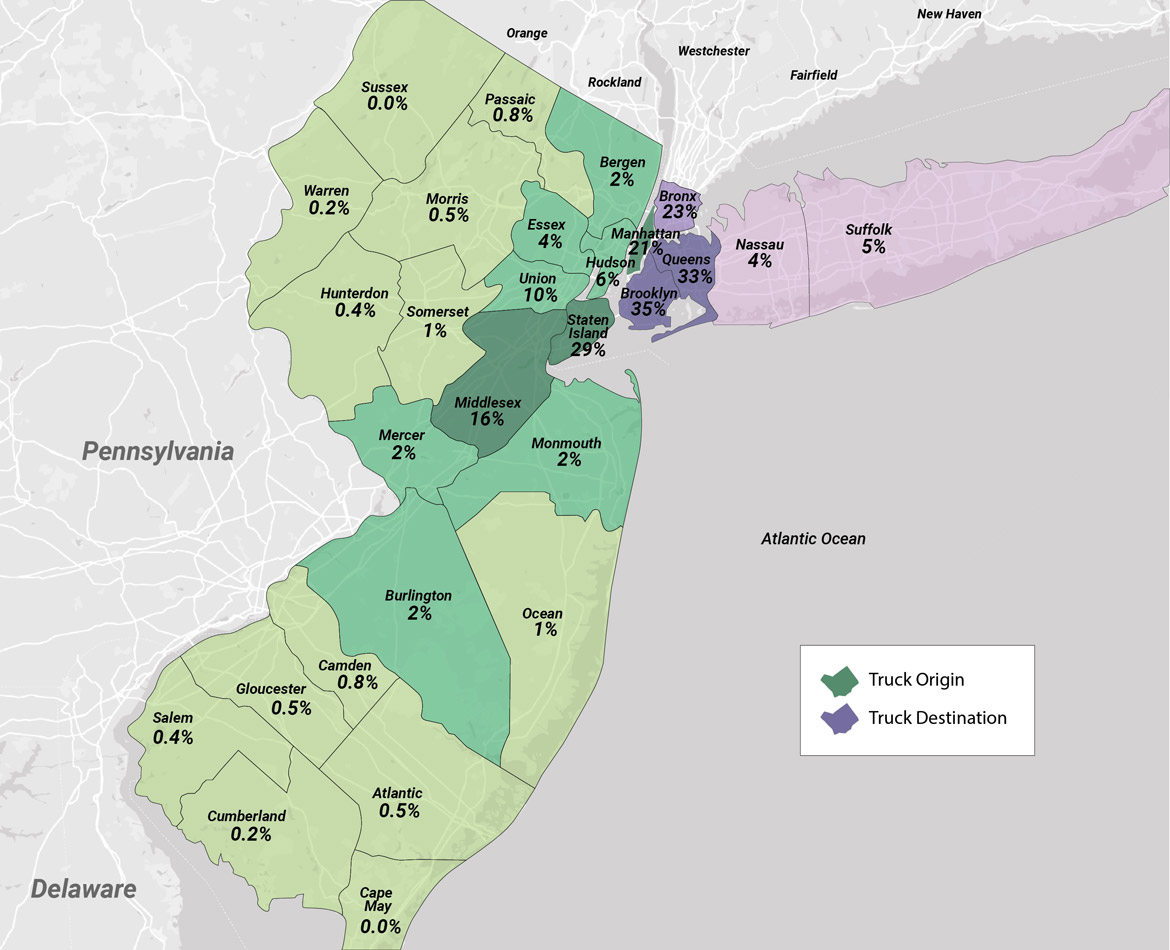
County origins (green) and destinations (purple) of medium truck traffic traveling eastbound across the East River. Click to enlarge.
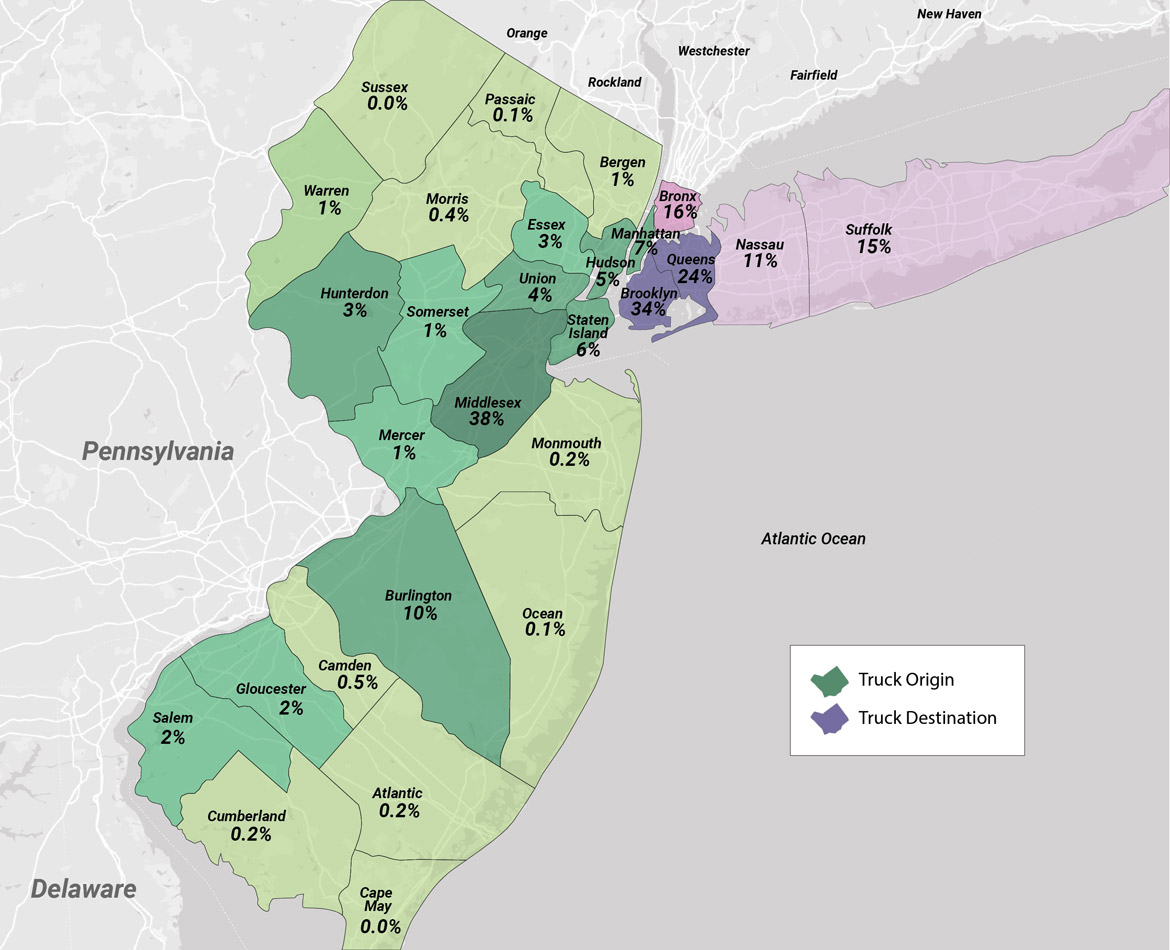
County origins (green) and destinations (purple) of heavy truck traffic traveling eastbound across the East River. Click to enlarge.
Images courtesy of the IPA Fellows Team “BQE: Freight, Mobility, Community” by April Schneider, Patricia Roche, and Emily Valentino.
The second proposal “From Hacking to Housing” uses solar power and suggests rebuilding rail and waterways. Architect Samir S. Shah, urbanist Jeffrey S. Nesbit, and community advocate Amy Breedlove explore questions regarding sea level rise and solar exposure to guide zoning regulations.
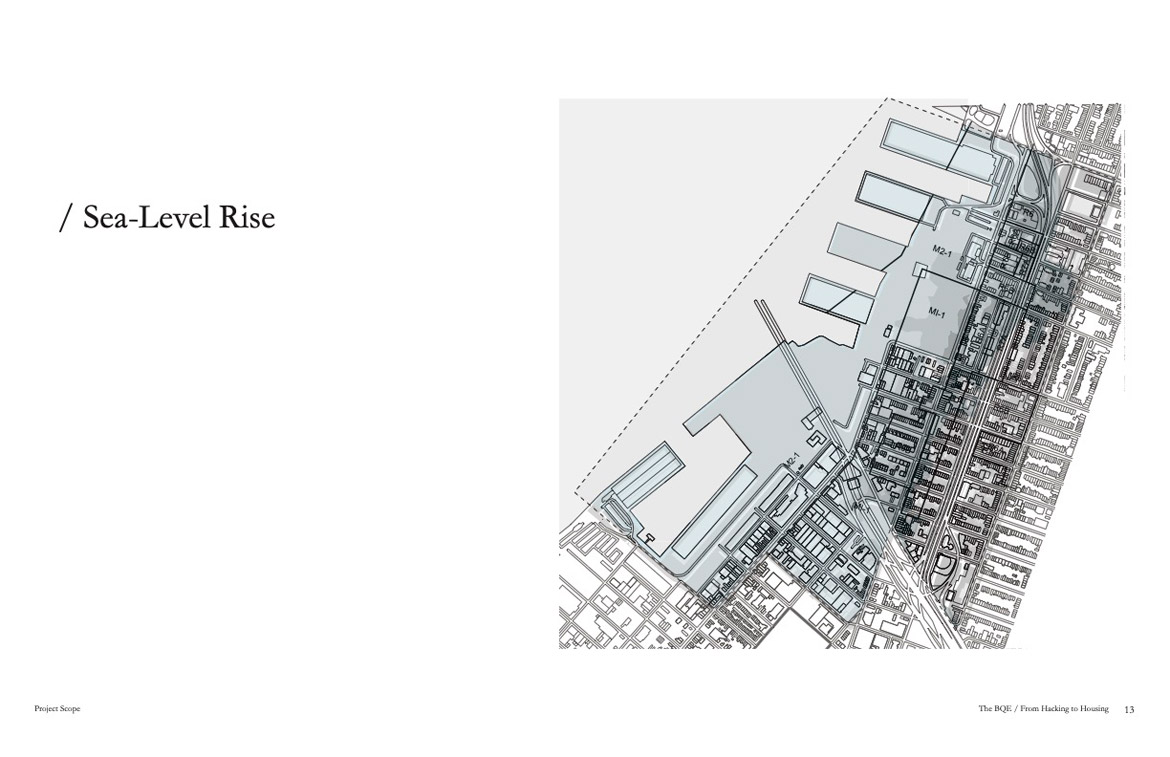
Sea-level rise and existing zoning with designated study areas.
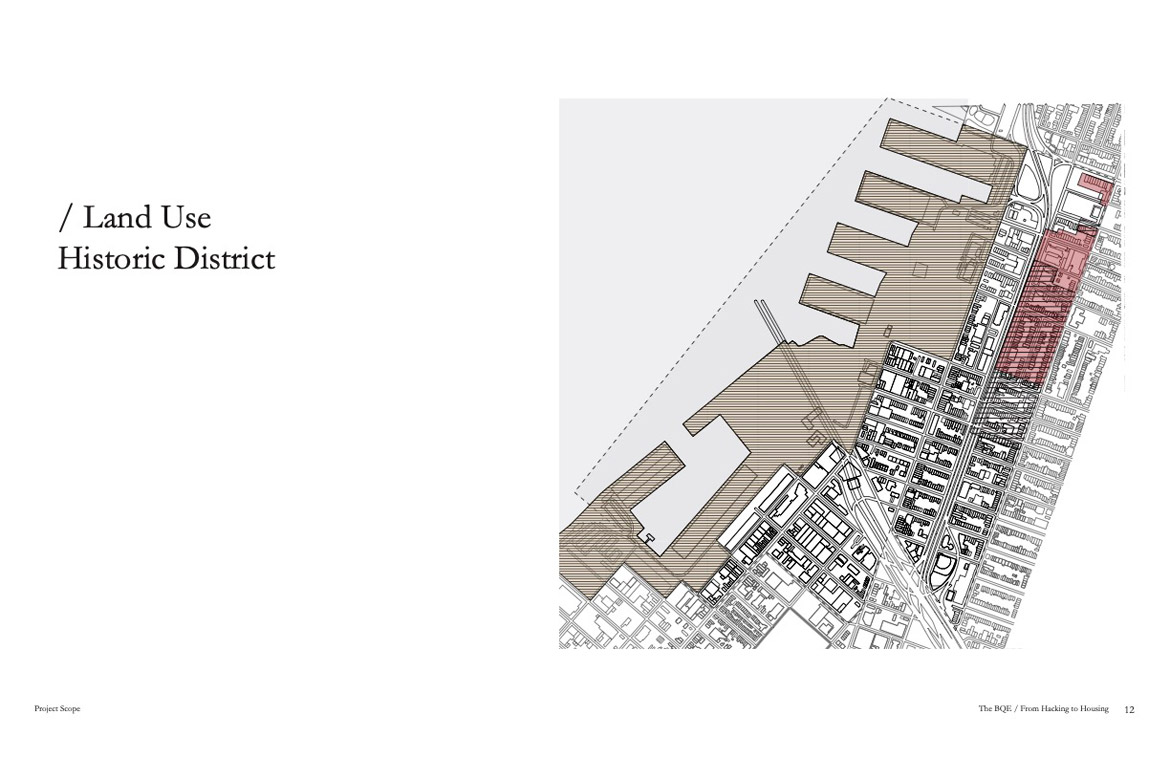
New parameters for environmental and social equity.
Images courtesy of the IPA Fellows Team “BQE/From Hacking to Housing” by Amy Breedlove, Jeffrey S. Nesbit, and Samir S. Shah.
The third proposal “BQE! (Building Queens’ Economy! Bring Queens Employment! Bring Queens Enjoyment!)” conceives a new industrial park along Newton Creek to improve the well-being of long ignored residents. Architect and project manager Julie Chou, multimedia artist Ying Liu, and architectural designer Catherine Ahn examine the intersection of the Long Island Expressway and Kosciuszko Bridge to reconnect long-separated neighborhoods of Sunnyside and Maspeth and incorporate “intermodal hubs.” Their proposal employs waterways, bike paths, parks, and co-manufacturing locations to support fabrication, resource, and career centers for jobs, services, and open space.
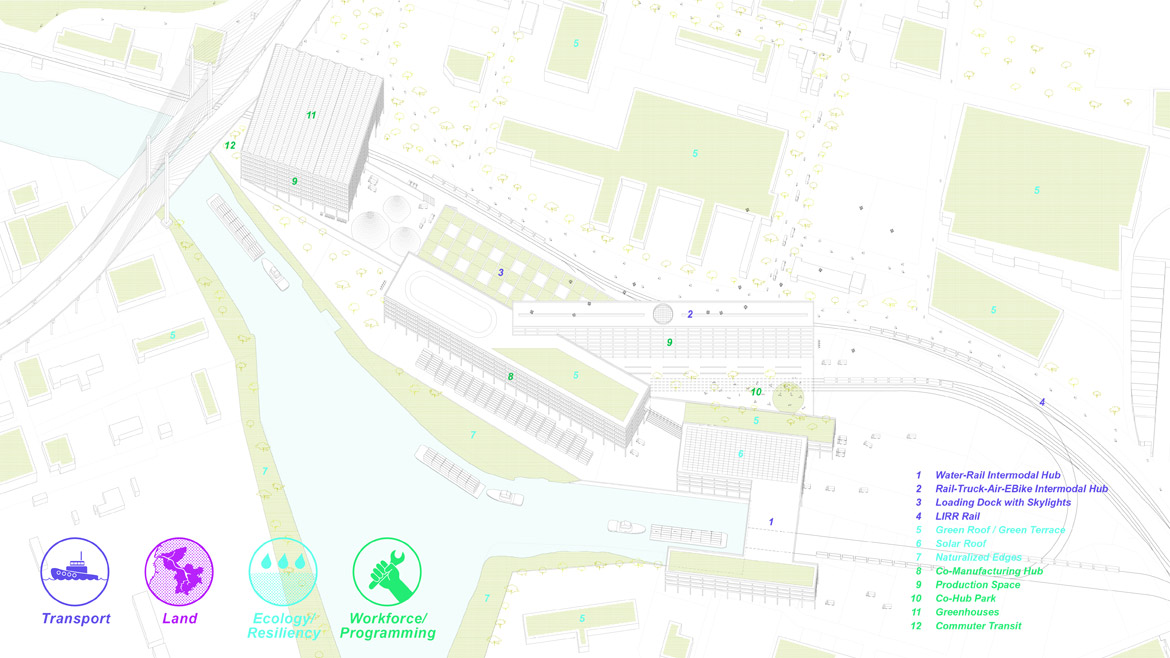
Co-Hub Sectional Diagram.
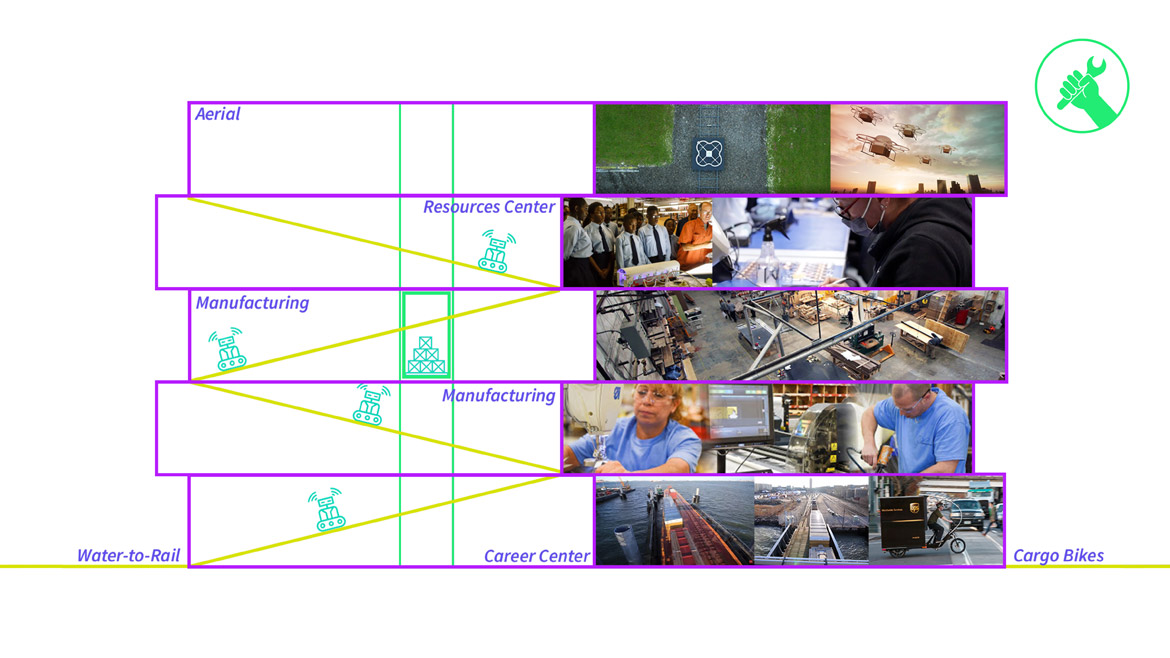
BQE! 21st Century Industrial Park Infrastructural and Ecological Proposals.
Images courtesy of the IPA Fellows Team “BQE! or Building Queens’ Economy! Bring Queens Employment! Bring Queens Enjoyment!” by Julie Chou, Ying Liu, and Catherine Ahn.
The fourth proposal, “NYC LOOP,” aims to bridge previously fractured neighborhoods. Urban designer and architect Marcus Wilford, landscape architect Ishaan Kumar, and architect urban planner Nasiq Khan rethink the BQE as a publicly accessible transit line from Jackson Heights to Downtown Brooklyn. Their intent is to connect neighborhoods initially divided by an industrial infrastructure that favored cars. The team takes a critical look at the investment in Manhattan-focused infrastructure that largely fails to consider immigrants and people of color in the outer boroughs.
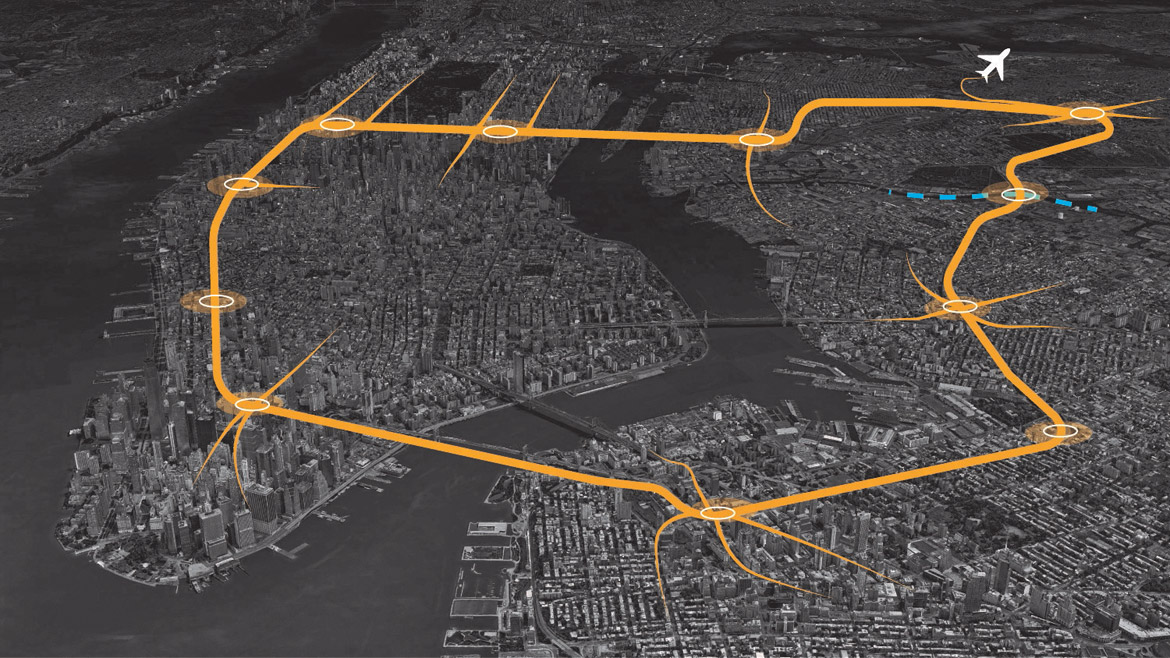
Creating a transit loop that connects isolated parts of the city into the greater whole.
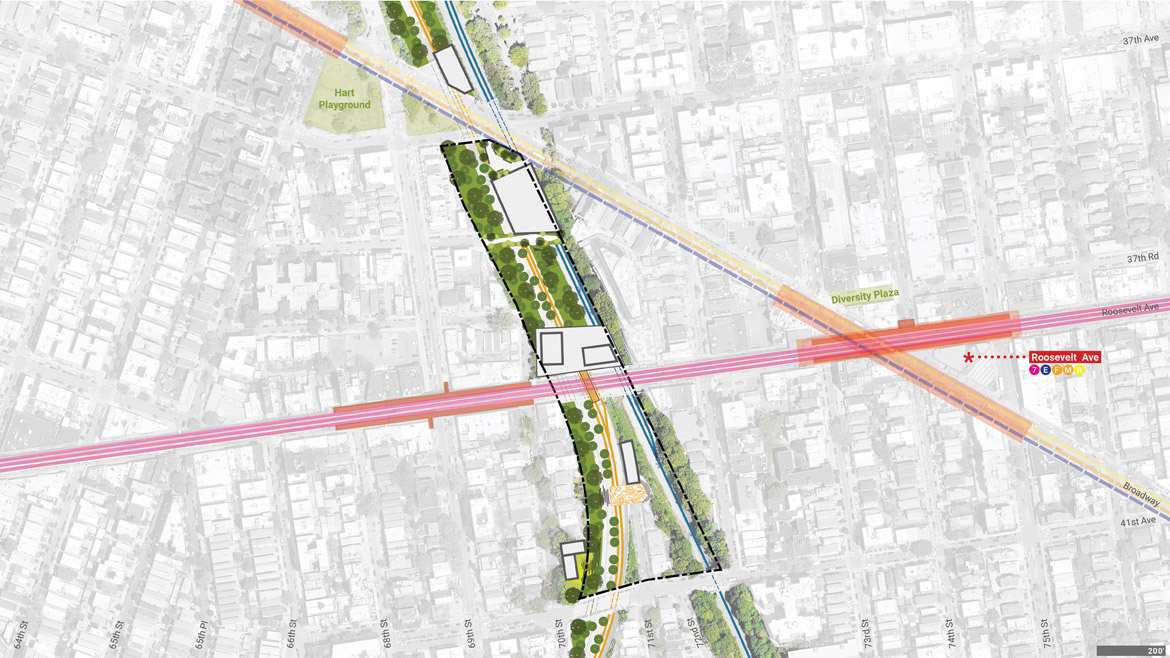
The BQE as the central social and ecological conduit for the community.
Images courtesy of the IPA Fellows Team “NYC LOOP” by Nasiq Khan, Ishaan Kumar, and Marcus Wilford.
The last proposal, “Pre/Post BQE,” introduces the concept of reforestation in urban contexts. Architect and educator Andrew Bruno and designer John Vogt endeavor to reverse pollution and harm inflicted upon communities by decades of construction that served the wealthy few. In doing so, the team seeks to create a thriving, sustainable urban environment rich in “pre-colonial natural ecologies that were superseded by the city.”
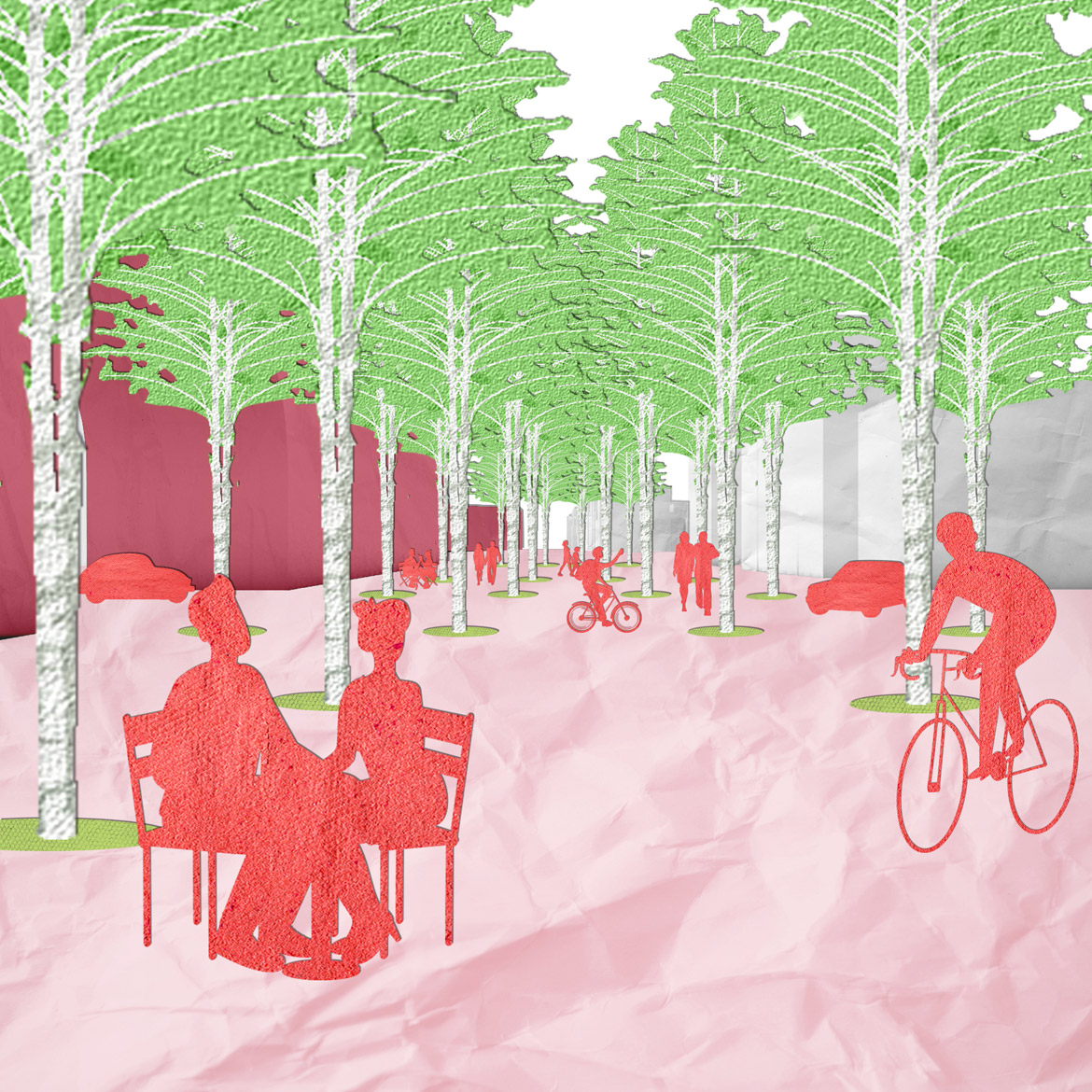
Third Avenue Surface, Sunset Park.
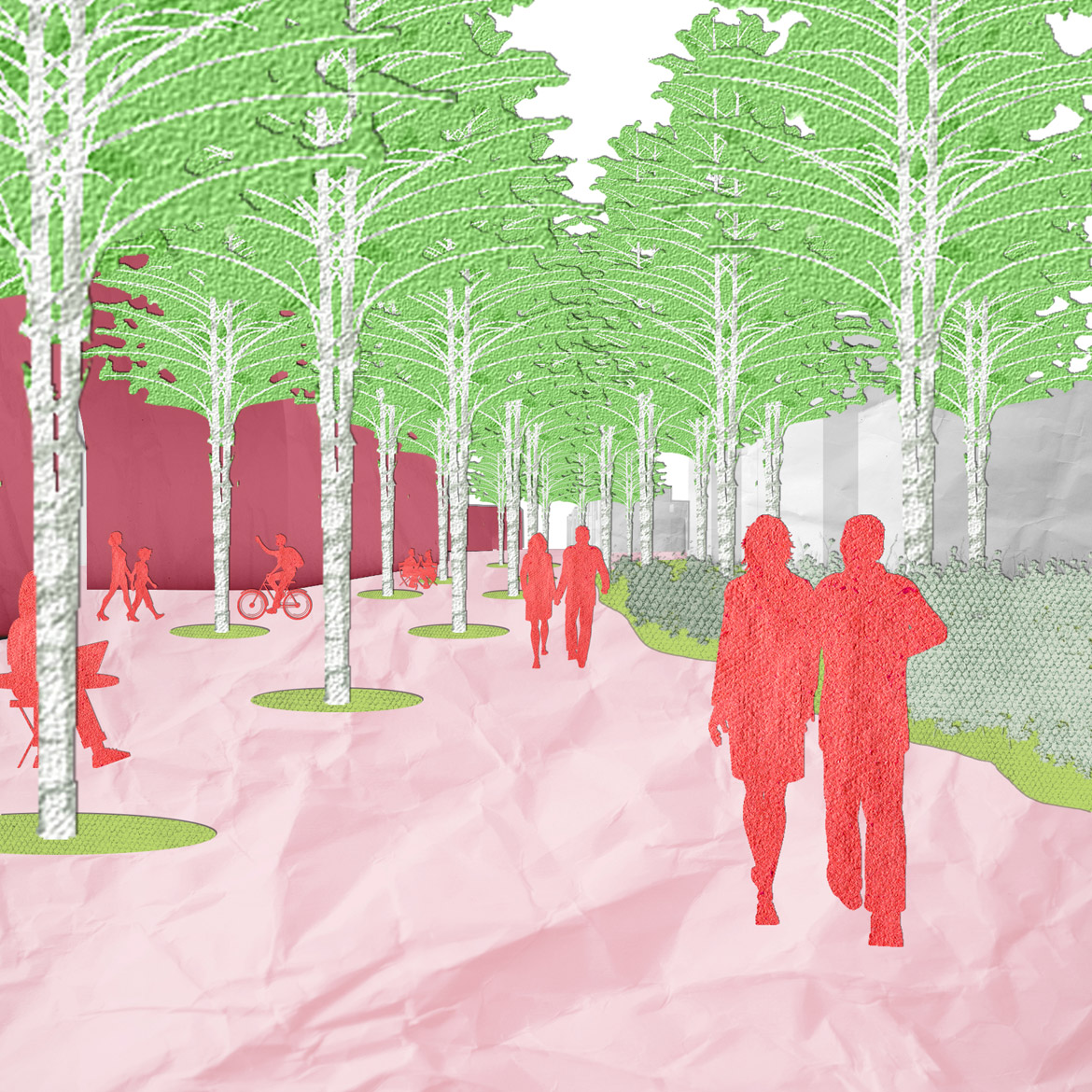
Third Avenue Surface with patches of wilderness beginning to appear.
Images courtesy of the IPA Fellows Team “Pre/Post BQE” by Andrew Bruno and John Vogt.
The exhibition–which follows years of the IPA’s previous mobile residencies in Sugar Hill, Harlem (2014), Sunset Park, Brooklyn (2016), and Flushing, Queens (2018)–continues to grapple with urban issues as part of a nationwide fight. BQE is part of “a huge movement now of freeway fighters,” says Kirschenfeld. “People all across the nation [are] fighting the extension and widening of freeways, [asking] ‘is it worth uprooting thousands of people for cars?’”
Director of the IPA’s 2020 residency Janet Fink points out that the BQE received a Congress for the New Urbanism’s 2021 “Freeway without Futures” award for 2021 that highlight projects “across the U.S. advocating to take down freeways and give them back to communities.”
“Our City could use the same means to redress the displacement and segregation intentionally implemented through the BQE as it was authored by Robert Moses,” wrote the IPA in a statement.
The IPA’s BQE Exhibition with its varied proposals will remain on display at the Block House on Governors Island, until February 11, 2022. It is accessible by ferry, which now operates year-round.








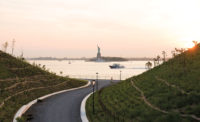
Post a comment to this article
Report Abusive Comment